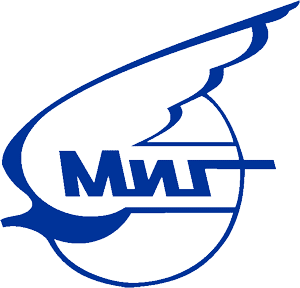Website www.migavia.ru | Industry Aerospace and defense Founded December 1939 | |
 | ||
Products Military aircraftCivil airliners Profiles | ||
Mikoyan mig 35 in action compilation l russian air force l egyptian air force
Russian Aircraft Corporation MiG (Российская самолетостроительная корпорация «МиГ»), or RSK MiG, is a Russian aerospace joint stock company. Formerly Mikoyan-and-Gurevich Design Bureau (Russian: Микоя́н и Гуре́вич, МиГ), then simply Mikoyan, it is a military aircraft design bureau, primarily designing fighter aircraft. Its head office is in Begovoy District, Northern Administrative Okrug, Moscow.
Contents
- Mikoyan mig 35 in action compilation l russian air force l egyptian air force
- Production
- Experimental
- UAVs and drones
- Naming conventions
- References
It was formerly a Soviet design bureau, and was founded by Artyom Mikoyan and Mikhail Gurevich as "Mikoyan and Gurevich", with the bureau prefix "MiG." Upon Gurevich's death in 1976, Gurevich's name was dropped from the name of the bureau, although the bureau prefix remained "MiG". The firm also operates several machine-building and design bureaus, including the Kamov helicopter plant.
MiG aircraft are a staple of the Soviet and Russian air forces, and the Soviet Union sold many of these aircraft within its sphere of influence. They have been used by the militaries of China, North Korea, and North Vietnam in aerial confrontations with American and allied forces, and form part of the air forces of many Arab nations.
In 2006, the Russian government merged 100% of Mikoyan shares with Ilyushin, Irkut, Sukhoi, Tupolev, and Yakovlev as a new company named United Aircraft Corporation. Specifically, Mikoyan and Sukhoi were placed within the same operating unit.
Production
Experimental
UAVs and drones
Naming conventions
MiGs follow the convention of using odd numbers for fighter aircraft. However, this naming convention is maintained not directly by MiG, but by ordering institutions, such as Ministry of Defence or Council of Ministers' Military-Industrial Commission (while in Soviet Union). The original designations for MiG aircraft are 2- or 3-digit numbers, separated by a dot. 1.44 or 1.42 is an example of original naming. Although the MiG-8 and MiG-110 exist, they are not fighters. The MiG-105 "Spiral" was designed as an orbital interceptor, contemporaneous with the U.S. Air Force's cancelled X-20 Dyna-Soar.
